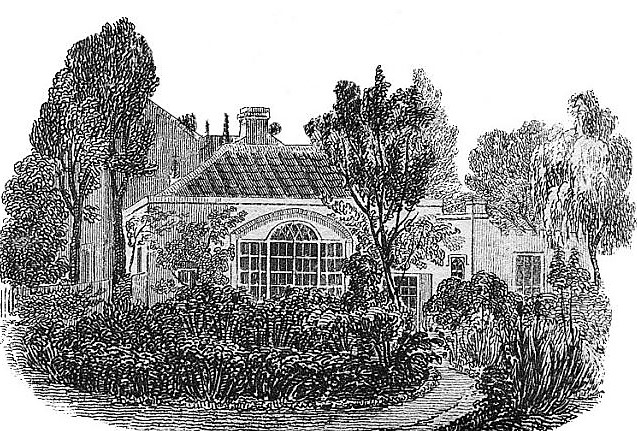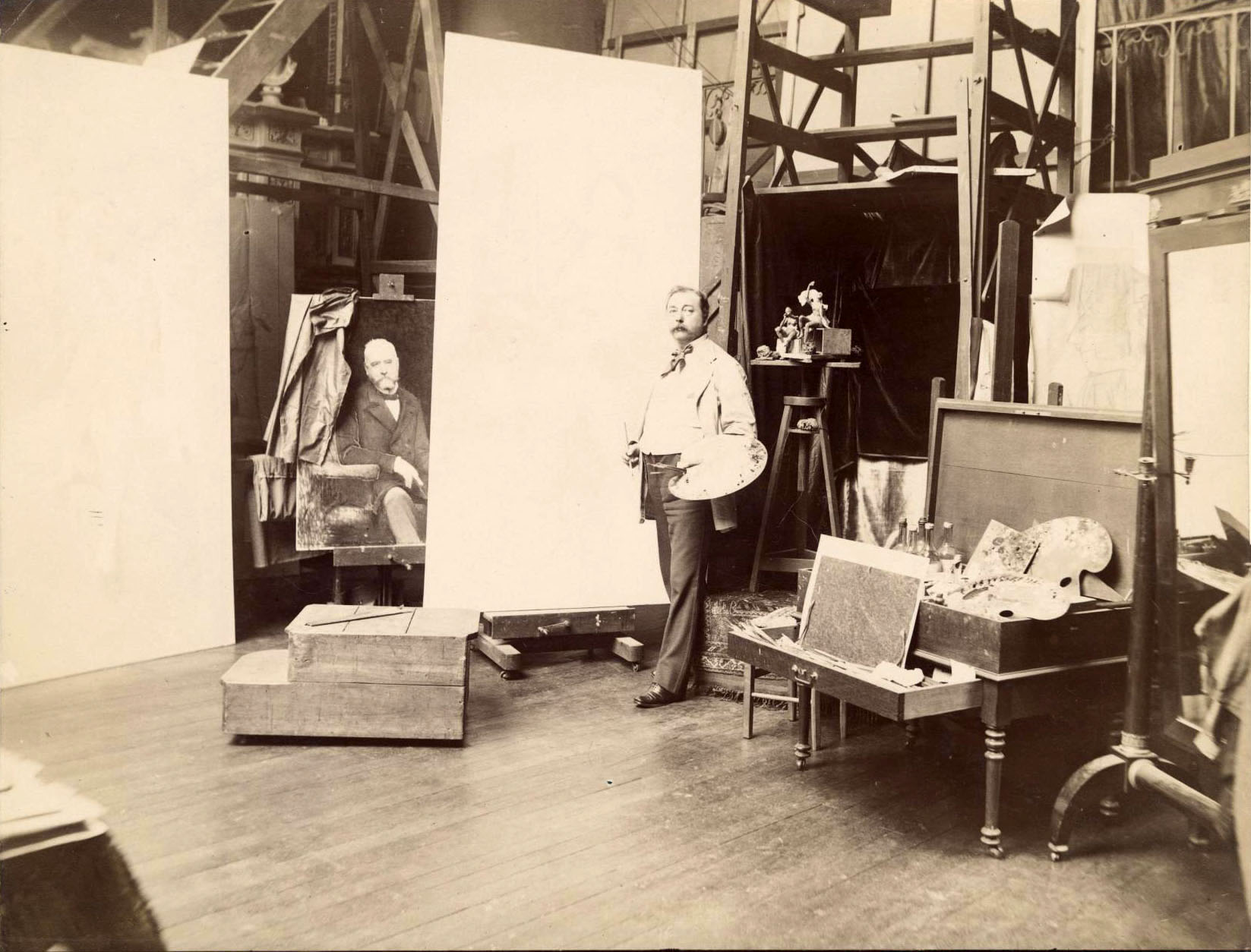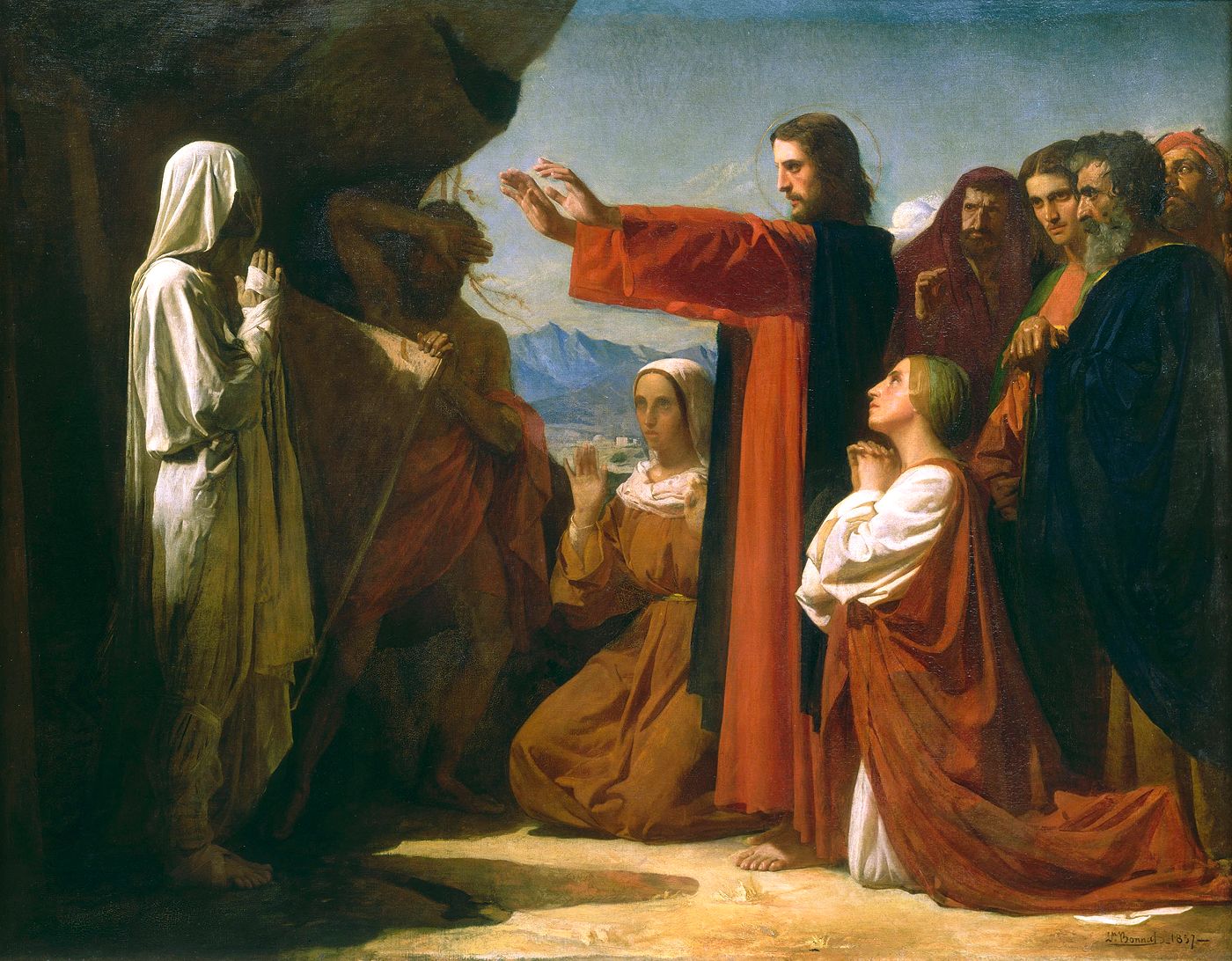|
George William Joy
George William Joy (7 July 1844 in Dublin, Ireland – 28 October 1925 in Purbrook, Hampshire) was an Irish painter in London. Life and career Joy was the son of William Bruce Joy, MD, and the brother of sculptor Albert Bruce-Joy, descendants of an old Huguenot family which settled in Antrim in 1612.Snoddy, Theo. Dictionary of Irish Artists: 20th Century, 2nd Edition. Merlin Publishing, Dublin, Ireland, 2002, pages 290–292. Retrieved March 26, 2008. He was initially destined for the military and was also an accomplished violin player. After a foot injury at young age, his father declared him unfit for military service. Joy was then educated at Harrow School and eventually pursued a career as an artist. He studied in London's South Kensington School of Art and later at the Royal Academy under John Everett Millais, Frederic Leighton and George Frederic Watts; among his fellow students was Hubert von Herkomer. In 1868 Joy went to Paris where for two years he was a student o ... [...More Info...] [...Related Items...] OR: [Wikipedia] [Google] [Baidu] |
John Cantiloe Joy And William Joy
The brothers John Cantiloe Joy (4 June 1805 – 10 August 1859), and William Joy (4 November 1803 – 22 March 1865), were English marine artists, who lived and worked together. They belonged to the Norwich School of painters, considered to be a unique phenomenon in the history of British art and the most important school of painting of 19th century England. Born in Southtown (now a part of Great Yarmouth) in the English county of Norfolk, and from a working-class background, they were both expected to become tradesmen. Their talents were recognised by the inventor George William Manby, who became their patron and mentor. In 1818, he provided them with a studio, and trained them to become skilled marine artists. After two years, Manby mounted an exhibition of their work. During the 1820s, the brothers' paintings were exhibited at the Norwich Society of Artists, the Royal Society of British Artists, the Royal Academy and at the British Institution. William moved to London in ... [...More Info...] [...Related Items...] OR: [Wikipedia] [Google] [Baidu] |
George Frederic Watts
George Frederic Watts (23 February 1817, in London – 1 July 1904) was a British painter and sculptor associated with the Symbolist movement. He said "I paint ideas, not things." Watts became famous in his lifetime for his allegorical works, such as ''Hope'' and ''Love and Life''. These paintings were intended to form part of an epic symbolic cycle called the "House of Life", in which the emotions and aspirations of life would all be represented in a universal symbolic language. Early life and education Watts was born in Marylebone in central London on the birthday of George Frederic Handel (after whom he was named), to the second wife of a poor piano-maker. Delicate in health and with his mother dying while he was still young, he was home-schooled by his father in a conservative interpretation of Christianity as well as via the classics such as the ''Iliad.'' The former put him off conventional religion for life, while the latter was a continual influence on his art. He s ... [...More Info...] [...Related Items...] OR: [Wikipedia] [Google] [Baidu] |
Royal Hibernian Academy
The Royal Hibernian Academy (RHA) is an artist-based and artist-oriented institution in Ireland, founded in Dublin in 1823. Like many other Irish institutions, such as the RIA, the academy retained the word "Royal" after most of Ireland became independent as the Irish Free State in December 1922. History The RHA was founded as the result of 30 Irish artists petitioning the government for a charter of incorporation. According to the letters patent of 5 August 1823, The Royal Hibernian Academy of Painting, Sculpture, and Architecture was established, which included a National School of Art. The first elected president was the landscape painter, William Ashford. In 1824 architect Francis Johnston was made president. He had provided headquarters for the RHA at Academy House in Lower Abbey Street at his own expense. The first exhibitions took place in May 1825 and were held annually from then on. To encourage interest in the arts works displayed at the RHA were distributed by lot a ... [...More Info...] [...Related Items...] OR: [Wikipedia] [Google] [Baidu] |
Salon Des Artistes Français
The Salon (french: Salon), or rarely Paris Salon (French: ''Salon de Paris'' ), beginning in 1667 was the official art exhibition of the Académie des Beaux-Arts in Paris. Between 1748 and 1890 it was arguably the greatest annual or biennial art event in the Western world. At the 1761 Salon, thirty-three painters, nine sculptors, and eleven engravers contributed. Levey, Michael. (1993) ''Painting and sculpture in France 1700–1789''. New Haven: Yale University Press, p. 3. From 1881 onward, it has been managed by the Société des Artistes Français. Origins In 1667, the royally sanctioned French institution of art patronage, the Académie royale de peinture et de sculpture (a division of the Académie des beaux-arts), held its first semi-public art exhibit at the Salon Carré. The Salon's original focus was the display of the work of recent graduates of the École des Beaux-Arts, which was created by Cardinal Mazarin, chief minister of France, in 1648. Exhibition at the Salon ... [...More Info...] [...Related Items...] OR: [Wikipedia] [Google] [Baidu] |
Genre Painting
Genre painting (or petit genre), a form of genre art, depicts aspects of everyday life by portraying ordinary people engaged in common activities. One common definition of a genre scene is that it shows figures to whom no identity can be attached either individually or collectively, thus distinguishing it from history paintings (also called ''grand genre'') and portraits. A work would often be considered as a genre work even if it could be shown that the artist had used a known person—a member of his family, say—as a model. In this case it would depend on whether the work was likely to have been intended by the artist to be perceived as a portrait—sometimes a subjective question. The depictions can be realistic, imagined, or romanticized by the artist. Because of their familiar and frequently sentimental subject matter, genre paintings have often proven popular with the bourgeoisie, or middle class. Genre subjects appear in many traditions of art. Painted decorations in anc ... [...More Info...] [...Related Items...] OR: [Wikipedia] [Google] [Baidu] |
History Painting
History painting is a genre in painting defined by its subject matter rather than any artistic style or specific period. History paintings depict a moment in a narrative story, most often (but not exclusively) Greek and Roman mythology and Bible stories, opposed to a specific and static subject, as in portrait, still life, and landscape painting. The term is derived from the wider senses of the word ''historia'' in Latin and ''histoire'' in French, meaning "story" or "narrative", and essentially means "story painting". Most history paintings are not of scenes from history, especially paintings from before about 1850. In modern English, "historical painting" is sometimes used to describe the painting of scenes from history in its narrower sense, especially for 19th-century art, excluding religious, mythological, and allegorical subjects, which are included in the broader term "history painting", and before the 19th century were the most common subjects for history paintings. His ... [...More Info...] [...Related Items...] OR: [Wikipedia] [Google] [Baidu] |
Philippe Rousseau
Philippe Rousseau (22 February 1816, Paris – 5 December 1887, Acquigny) was a French painter known primarily for his still life paintings. Biography He was a pupil of Baron Antoine-Jean Gros and Jean-Victor Bertin at the École des Beaux-Arts in Paris. He began his career as a landscape painter, but later concentrated on still life and animal subjects. He exhibited at the Paris Salon from 1834, earning a third class medal in 1845, a second class medal in 1855, and a first class medal in 1848. Rousseau was made a knight of the Legion of Honor in 1852, and promoted to officer in 1870. Artwork in public collections * ''Le Singe aquafortiste'', Magnin Museum, Dijon, France * 1867 : ''Chardin et ses modèles'', Orsay Museum, Paris * Still life : ''Nature morte: gibier et panier'', Orsay Museum, Paris * Still life : ''Nature morte: gibier et plat d'orfèvrerie'', Orsay Museum, Paris * ''The Fish Market'', The National Gallery, London * ''Still life with Oysters'', The Nationa ... [...More Info...] [...Related Items...] OR: [Wikipedia] [Google] [Baidu] |
Jules Lefebvre
Jules Joseph Lefebvre (; 14 March 183624 February 1911) was a French figure painter, educator and theorist. Early life Lefebvre was born in Tournan-en-Brie, Seine-et-Marne, on 14 March 1836. He entered the École nationale supérieure des Beaux-Arts in 1852 and was a pupil of Léon Cogniet. Career He won the prestigious Prix de Rome in 1861. Between 1855 and 1898, he exhibited 72 portraits in the Paris Salon. Many of his paintings are single figures of beautiful women. Among his best portraits were those of M. L. Reynaud and the Prince Imperial (1874). In 1891, he became a member of the French Académie des Beaux-Arts. He was professor at the Académie Julian in Paris. Lefebvre is chiefly important as an excellent and sympathetic teacher who numbered many Americans among his 1500 or more pupils. Among his famous students were Fernand Khnopff, Kenyon Cox,Oxford Art Online, "Lefebvre, Jules" Félix Vallotton, Ernst Friedrich von Liphart, Georges Rochegrosse, the Scottish- ... [...More Info...] [...Related Items...] OR: [Wikipedia] [Google] [Baidu] |
Jules Breton
Jules Adolphe Aimé Louis Breton (1 May 1827 – 5 July 1906) was a 19th-century French naturalist painter. His paintings are heavily influenced by the French countryside and his absorption of traditional methods of painting helped make Jules Breton one of the primary transmitters of the beauty and idyllic vision of rural existence. Early life and training Breton was born on 1 May 1827 in Courrières, a small Pas-de-Calais village. His father, Marie-Louis Breton, supervised land for a wealthy landowner. His mother died when Jules was 4 and he was brought up by his father. Other family members who lived in the same house were his maternal grandmother, his younger brother, Émile, and his uncle Boniface Breton. A respect for tradition, a love of the land and for his native region remained central to his art throughout his life and provided the artist with many scenes for his Salon compositions. His first artistic training was not far from Courrières at the College St. B ... [...More Info...] [...Related Items...] OR: [Wikipedia] [Google] [Baidu] |
Cabanel
Alexandre Cabanel (; 28 September 1823 – 23 January 1889) was a French painter. He painted historical, classical and religious subjects in the academic style. He was also well known as a portrait painter. According to ''Diccionario Enciclopedico Salvat'', Cabanel is the best representative of ''L'art pompier'', and was Napoleon III's preferred painter. Biography Cabanel entered the École des Beaux-Arts in Paris at the age of seventeen, and studied with François-Édouard Picot. He exhibited at the Paris Salon for the first time in 1844, and won the Prix de Rome scholarship in 1845 at the age of 22. Cabanel was elected a member of the Institute in 1863. He was appointed professor at the École des Beaux-Arts in 1864 and taught there until his death. He was closely connected to the Paris Salon: "He was elected regularly to the Salon jury and his pupils could be counted by the hundred at the Salons. Through them, Cabanel did more than any other artist of his generation to ... [...More Info...] [...Related Items...] OR: [Wikipedia] [Google] [Baidu] |
Léon Bonnat
Léon Joseph Florentin Bonnat (20 June 1833 – 8 September 1922) was a French painter, Grand Officer of the Légion d'honneur and professor at the Ecole des Beaux Arts. Early life Bonnat was born in Bayonne, but from 1846 to 1853 he lived in Madrid, where his father owned a bookshop. While tending his father's shop, he copied engravings of works by the Old Masters, developing a passion for drawing. In Madrid he received his artistic training under Madrazo. He later worked in Paris, where he became known as a leading portraitist, never without a commission. His many portraits show the influence of Velázquez, Jusepe de Ribera and other Spanish masters, as well as Titian and Van Dyke, whose works he studied in the Prado, which placed him at the forefront of painting in France in the 1850s, opposing neoclassicism and academicism. Following the period in Spain, Bonnat worked the studios of the history painters Paul Delaroche and Leon Cogniet (1854) in Paris. Despite repeated attem ... [...More Info...] [...Related Items...] OR: [Wikipedia] [Google] [Baidu] |








.jpg)
